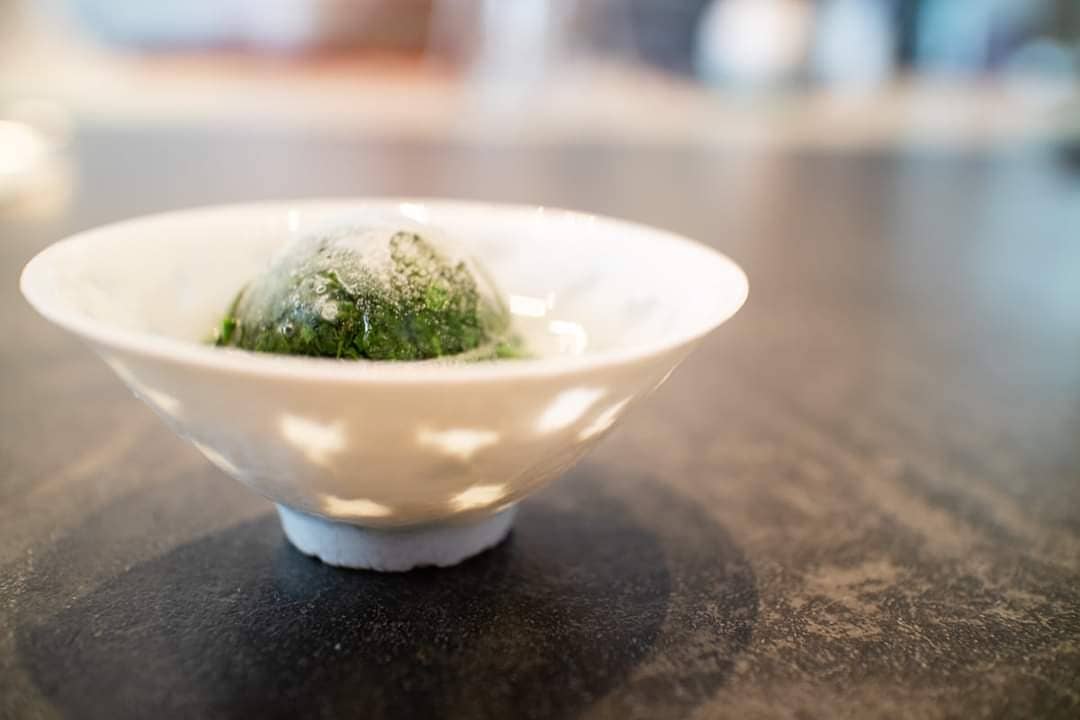We’re in the midst of the monsoon season in Japan, the rainy and muggy days continue... After the rains, come the hot humid summer days. And if you are familiar with Japanese summers, you know how hot and humid it can get!
When steeping tea at home, it is typical for the majority of people to use hot boiling water. In fact, the very basic saying of the Japanese tea ceremony is; “boil water, make tea, drink”. The simple guidelines we generally provide on Yunomi labels is also for making tea with hot water: Take 5 grams of tea, steep in 200ml of hot water (70C/160F degrees) for about 60 seconds.
If you have experimented with adjusting the temperature of steeping tea however, you are probably aware that water at hotter temperature extracts stronger flavors. Specifically, the caffeine and catechins can overwhelm the umami and sweetness of the L-theanine (the amino acid primarily responsible for the umami flavor) in tea. This is why for gyokuro, kabusecha, and even high grade sencha, cooler temperature water is recommended in order to maximize the sweet umami flavors without putting too much emphasis on extracting the shibumi/bitter flavor of the tea leaves. All in all, obtaining the right balance of the different taste components is important but it also depends on one’s preference! (For an in-depth article on the flavor in tea, check out: The chemistry behind tea flavor).
Recently, since it is getting to be more humid, I have found myself more drawn to cold (a Japanese summer favorite is barley tea, mugicha!) and iced drinks, especially during the day. In fact, I recently encountered a very decent iced-matcha latte, which I then tried to replicate at home…
 It’s the season for iced drinks! What’s your favorite way to make a matcha latte? Left is an iced matcha latte and iced hojicha latte from a coffee shop called butter in Nakano, Tokyo Prefecture. Photo on the right is a snapshot (and here’s the video on Yunomi’s instagram) of the process of making a homemade matcha latte.
It’s the season for iced drinks! What’s your favorite way to make a matcha latte? Left is an iced matcha latte and iced hojicha latte from a coffee shop called butter in Nakano, Tokyo Prefecture. Photo on the right is a snapshot (and here’s the video on Yunomi’s instagram) of the process of making a homemade matcha latte.
Well, before I start to get carried away with iced-matcha latte, today, I thought I would touch on a refreshing way of making tea, ice-steeped Japanese green tea! Called Kōridashi (氷出し), in Japanese, this steeping method refers to the process of very slowly extracting tea leaves with ice at 0 degrees. Perhaps, it is the best extraction method in which one may bring out the full umami flavors while suppressing the astringency of the tea.
A recommended way to experiment with ice steeping green tea is by utilizing green tea leaves from gyokuro or kabusecha to maximize the already umami-full tea. Alternatively, if you have a tea that you feel is too bitter or old (or you simply don’t like it!), an option could be to try ice steeping. The outcome could be a milder and less bitter tea. Further, although this may only be relevant for those who are mindful about caffeine intake, reports indicate ice steeping tea can reduce the caffeine content of tea by approximately 75%. On average, one cup of sencha (120ml) has about 24mg of caffeine, when it is cold water steeped this reduces to 12mg, and ice steeping it will bring it even lower to 6mg.
How to Ice steep your tea
The good news is, ice steeping tea is pretty straightforward! All you need is a kyusu (Japanese tea pot) or container, tea leaves, and a handful of ice cubes. I personally recommend using a larger quantity of tea leaves than usual in your teapot and then placing some ice cubes on top.
 Looks more like a high school chemistry experiment! I decided to try ice steeping with a shincha from Iba Yu Tea Garden, located in Tanegashima, Kagoshima Prefecture.
Looks more like a high school chemistry experiment! I decided to try ice steeping with a shincha from Iba Yu Tea Garden, located in Tanegashima, Kagoshima Prefecture.
 Snapshots capturing the ice steeping process. I started at about 14:00PM, and the ice steeped cup of tea was ready to taste after three full hours.
Snapshots capturing the ice steeping process. I started at about 14:00PM, and the ice steeped cup of tea was ready to taste after three full hours.
While this method is easy, do keep in mind that ice steeping will take some time. It took three full hours for the ice to completely melt at room temperature of about 24 degrees Celsius. It was well worth the wait because the chilled umami-full cup of tea was tasty and refreshing! Another unique method of ice steeping tea involves actually freezing tea leaves into the ice cubes you will be making. In this way, one is steeping the leaf in cold water as it freezes and again as it thaws. At a recent tea event I attended (Tokyo Tea Tour 2023), one of the teas that you could try from Kuma Tea Gardens (Yame, Fukuoka Prefecture) was an ice steeped Saemidori cultivar first flush sencha prepared in this interesting way. In fact, it was actually from this discovery that sparked interest in me to explore a bit with ice steeping!
 From the event, Tokyo Tea Tour 2023. This was the ice steeped saemidori sencha participants could try from Kuma Tea Gardens.
From the event, Tokyo Tea Tour 2023. This was the ice steeped saemidori sencha participants could try from Kuma Tea Gardens.
I actually tried to make ice steeped tea this way, too, by putting some tea leaves into the ice cube tray beforehand. However, I was not very successful with ice steeping tea this way because the end product was a very shibumi-full (i.e., bitter) cup of iced tea! Perhaps, I put in too many tea leaves or let the ice steep go for too long… Stumped, I thought it would be best to reach out to the experts! I asked Kazumi Nakatani from Kuma Tea Gardens for her assistance. She kindly got back to me, answering my questions.
[Q] When you ice steep your tea by putting tea leaves into the ice tray beforehand, how much tea leaves do you use?
Approximately 2-3 grams (I use roughly a teaspoon measure) per ice cube square. Of course, it varies depending on the shape and size of the ice tray.
[Q] After the tea leaves ice cubes are done, do you just wait for it to melt at room temperature? Or do you add cold water?
You can add water or lukewarm water and the ice steeped tea will be ready in 3-6 minutes (depending on temperature). For starters, I recommend enjoying the tea while it is nice and chilled.
The differences between cold water steeped tea and ice steeped tea
Although ice steeping tea may be new to you, many people are already familiar with cold water steeping. And one can probably guess the difference between these two methods, but I will just provide a brief summary below:
 Happy summer, happy chilled tea tasting!
Happy summer, happy chilled tea tasting!
Featured image: Ice steeped tea through the unique method of freezing the tea leaves beforehand. Photo courtesy of Kuma Tea Gardens, Kazumi Nakatani.
Have additional insights? Please don't hesitate to post comments and/or questions below. Or directly contact me (Moé Kishida): moe@yunomi.life. Thank you!


